NSW Budget 2025-26: Pittwater Allocations
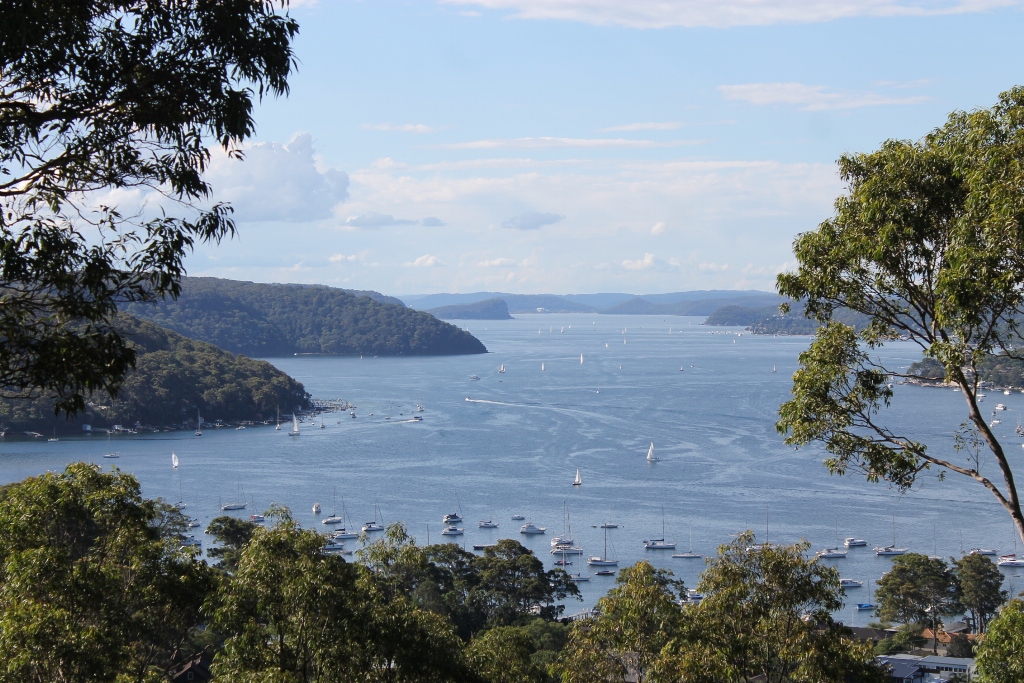
A focus on delivering infrastructure for Pittwater is tabled in NSW Treasurer, The Hon. Daniel Mookhey's third Budget for NSW.
The Treasure stated:
''The Minns Labor Government has improved the state’s fiscal position without privatisation or an unfair wages cap.
After inheriting a $15.3 billion budget deficit, the government can outline a responsible pathway to a modest surplus –the first since 2018-19.''
"Pressures remain on the State Budget, including the cost of natural disasters and rising workers compensation, which the Minns Labor Government is addressing with a comprehensive reform package currently before Parliament."
The 2025-26 Budget papers are available at: www.budget.nsw.gov.au/2025-26/budget-papers
The Allocations for Pittwater are:
Wakehurst Parkway Improvements: $21.283 million
The Improvements to Wakehurst Parkway has the highest allocation in the 2025-26 NSW Budget, with $67.5 million allocated overall. The Budget Paper No.03 Infrastructure Statement records an Est. of 14,377,000 Total Cost To 30-06-25 $000 and a $21,283,000.00 Allocation in 2025-26 Budget.The project webpage for the Wakehurst Parkway Improvements still states subject to contract award, construction is expected to start later this year.
In January 2025 Dick Clarke, coordinator of the Elanora Heights Residents Association, expressed concerns about the proposed upgrade at the Elanora Rd / Parkway intersection, which removes the shelter lane in the centre for turning right/south, replaced with a concrete barrier.
"This clearly and obviously makes it dramatically less safe. The proper solution is a fully formed shelter lane." Mr Clarke said then
On Monday 26 May the project team held a pop-up session at Bilarong community hall, to answer questions and concerns regarding the approved design at Elanora Road.
On May 28 the Elanora Heights Residents Association shared the following:
Design failure 1 – Elanora Road intersection
TfNSW’s proposed works design problems:
- Removal of existing small ‘seagull’ acceleration-merging lane will force right turning cars to cross two lanes of traffic in opposite directions at travelling at 70-kmh;
- Will make current long wait times worse;
- Will encourage greater risk-taking as frustration builds;
- Will therefore result in more accidents, potentially fatal;
- Option of building a ‘compliant’ ‘seagull’ acceleration-merging lane was passed over because it would need to be 450m long – a budget issue.
EHRA’s proposed improved design solution:
- Formalise a new longer ‘seagull’ acceleration-merging lane;
- Does not need to be 450m long as normal ‘compliant’ seagull lane because heavy vehicles do not use Elanora Rd, it has a 6.0m length + 3.0t GVM limit (hairpin bends),
- Light vehicles can accelerate in 100~200m distance,
- It is noted that the Sydney Academy of Sport’s main entrance onto the Parkway has had a very short ‘seagull’ lane installed by TfNSW in recent years – this is an obvious precedent;
- Safety can be further improved by reducing speed limit to 60kmh there,
- Added benefit of making egress from Billarong Reserve safer;
Widening to accommodate this extended land can be done on the uphill (northern) side of Parkway (currently a ditch with poor vegetation), eliminating impact on foreshore ecological community
Design failure 2 – Floodproofing and wildlife protection
TfNSW’s proposed works design problems:
- Traffic flow improvements at Oxford Falls propose to reduce flooding impacts,
- This section is not where the major flooding occurs,
- Is a partial band-aid solution at best;
- Does not address major flooding;
- Does not address wildlife protection,
- Current chainwire fencing has had some effect but roadkill still occurs there,
- The fence separates the ecological communities.
EHRA’s proposed improved solution:
- Raise the whole roadway from south of the upper Middle Creek bridge to the intersection with the Sydney Academy of Sport;
- Using precast hollow box sections bearing on the existing road substrate where suitable, or bored piers where needed, that allow both floodwater and wildlife to move freely below road level;
- This would allow half the road to remain open in a contra-flow arrangement (AM and PM peaks) during the works, albeit at a reduced speed limit;
- Indicative concept sketch below:
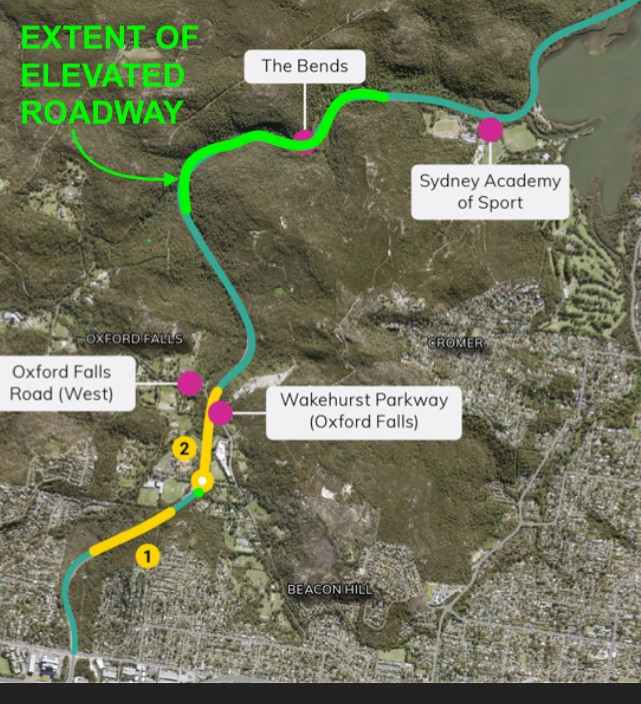
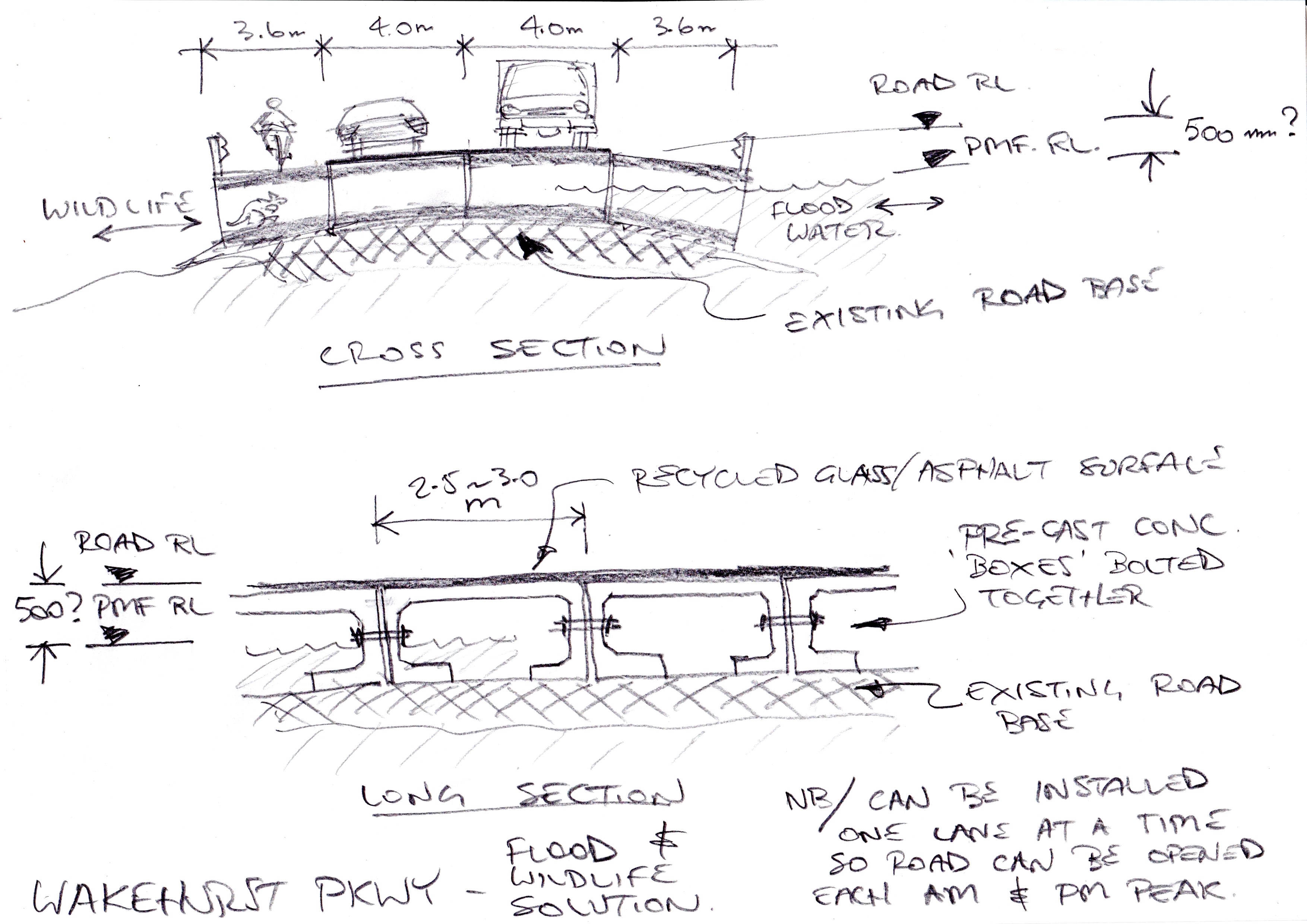
Mona Vale Road West: $10 Million
The Government's Budget Paper No.03 Infrastructure Statement document lists $190.0 million allocated for Mona Vale Road West - McCarrs Creek Road to Powder Works Road (NSW and Australian Government funded).
$28,306 Expended Allocation of Total Cost To 30-06-25 $000 - $10,000,000.00 Allocation in 2025-26 Budget
Planning, design and environmental assessment work is slated to take about 2½ years, allowing construction to start in 2028. The construction will take around two years. A property acquisition process is set to begin early next year, the details of which are yet to be released.
The NSW Government, in announcing the allocation, listed the works that are in the project, which shows works to ancillary roads now form part of the updated package and costings. Increases in construction costs are also ongoing in all projects across Australia - the Mona Vale East upgrade costs blew out as well, to $250 million, from the announced $140 million.
The total cost for the project, jointly funded, is stated to be $500 million.
See: NSW Budget green lights congestion busting Mona Vale Road West upgrade - Scruby delivers on Election Promise: Secures Funding - Week For June 2025 reports
Scamps-Scruby-Quinn Secure $250m Funding Commitment from Federal Labor for Mona Vale Road West Upgrade - March 2025
Pittwater MP shows NSW Premier unfinished Mona Vale Road West Construction site - November 2024
A project notification dated April 2025 advises Transport for NSW will carry out survey and utility investigation work along the Mona Vale Road corridor between McCarrs Creek Road, Terry Hills and Powderworks Road, Ingleside.
The investigation work will be carried out until 1 August 2025 during standard construction hours. Impacted community will be notified before work commences. The work will take place on:
- Mona Vale Road between McCarrs Creek Road, Terry Hills and Powderworks Road, Ingleside.
- McCarrs Creek Road and Kanangra Avenue, Terry Hills.
- Wirreanda Road, Tumburra Street, Addison Road, Bungendore Street and Harvey Road, Ingleside.
Key features of the Mona Vale Road West upgrade include:
- A new traffic signal intersection with Kimbriki Road, including additional dedicated turning lanes and a truck climbing lane
- Relocating the intersection with Tumburra Street to the west by about 40 metres and changing access to left turn in and left turn out only
- Closing the existing intersection with Addison Road to general traffic and restricting access to emergency vehicles only
- Constructing a new local road connection between Bungendore Street and Powderworks Road, using the existing Harvey Road corridor, and extending the new local road east of Addison Road to meet the intersection of Mona Vale Road and Powder Works Road
- Removing bus stops near Tumburra Street and re-directing bus services along the new local road connection and Tumburra Street to serve existing and future land uses
- Other features to encourage pedestrians and cyclists include a shared use path on the northern side of Mona Vale Road between McCarrs Creek Road and Addison Road and upgraded street lighting and landscaping for the full length of the project.
- To protect local wildlife, there will be a 40-metre fauna bridge over Mona Vale Road and two fauna underpasses.
Sydney Academy of Sport Running Track; $6.7 million
On 24 June 2025 the NSW Government announced that $6.7million has been allocated in the 25/26 NSW State Budget for a new synthetic athletics track at Sydney Academy of Sport.
When Pittwater MP Jacqui Scruby raised this matter in the Legislative Assembly on June 4, The Hon. Ron Hoenig, Minister for Local Government, stated the insurance company had paid about $2 million for the damage sustained to the track, but because of where it is located:
"there has been considerable examination of the cause by the Office of Sport, not simply a re-laying of the surface on the floodplain, where it again would be damaged. It took a fair bit of engineering analysis to be able to determine that.
In an effort to consider its being repaired, it probably will have to be elevated. How much it has to be elevated is a difficult decision, bearing in mind the damage that has occurred by floodwater and inundation."
The Government would also be taking into account its own New guidelines on synthetic turf use in sports fields, released May 21 2025.
The Guidelines for Division 5.1 Assessments Addendum for Synthetic Sports Field will come into effect from 25 August 2025, providing the Department time to ensure stakeholders understand the intent of the document and how to apply it to their work adequately.
That document states:
'Chemical and compound leachate and particles from synthetic turf materials and plastics as well as pesticides and fungicides used for maintaining the surface are likely to pollute and contaminate local and surrounding waterways, soils and air as they travel through the environment. However, the highest risk of pollution is during installation and when it is first installed.
Plastic migration from synthetic turf sports fields, particularly into waterways and bushland, is a key concern. There is evidence that both rubber infill and turf fibre blades from synthetic turf fields are found in waterways in NSW. It has been estimated that a synthetic turf field without structures to reduce infill loss will wash tens to hundreds of kilograms of infill per year into stormwater systems or waterways. The amount of turf fibres lost from a synthetic turf field is likely to be in the hundred’s of kilograms per year, with the amount increasing for fields near the end-of-life or poorly maintained.
International studies have also found a large difference between the amount of microplastics shed from different types of synthetic turf with weathering and UV exposure.'
More in previous reports:
Local MP's Call for Funding to fix Narrabeen Athletics Track: Federal Budget scheduled for March 25 - March 2025 report
Sydney Academy of sport athletic Track Problems persist: concerns rubberised materials - pollutants leaching into Narrabeen Lagoon - March 2024 report
The Government stated the new track will feature a World Athletics compliant synthetic athletics track complete with a new asphalt subbase, a moisture resilient track surface, improved stormwater drainage and supporting infrastructure.
The Office of Sport will develop a construction timeline which outlines when works will commence and when the new track is expected to re-open.
Minister for Sport Steve Kamper said:
“The Sydney Academy of Sport athletics track is more than just a facility – it’s a key piece of infrastructure that supports athletes at every level, from grassroots to elite.
The new facility of world-class standard ensures New South Wales continues to lead the way in sporting excellence.
The closure of the track in 2023 caused real disruption and uncertainty, so I’m pleased the Minns Labor Government is delivering the investment needed to bring this vital facility back to life.
I look forward to turning the first sod on construction of the new track with The Member for Pittwater Jacqui Scruby, and Member for Wakehurst, Michael Reagan who have been such strong and vocal advocates for this project.”
Member for Pittwater Jacqui Scruby said:
“ Sydney's northern beaches has a proud history of developing athletes who have shone on the world stage.
“The closure of the track was devastating and I’m proud to have fought hard on behalf of the Pittwater community for its replacement.
“I’d like to thank the NSW Government for their $6.7 million commitment for a new track and look forward to the next generation of athletes setting records at the venue.”
Member for Wakehurst Michael Regan said:
‘This funding commitment clears a big hurdle in the race to fix the Narrabeen athletics track. ‘The track is a critical public asset for the community. It brings people together to connect, be physically active and focus on their goals. From school carnivals to athletics clubs, the impact of the track closure has been significant.”
‘Thanks also to the community for their patience. We need a resilient track that can withstand future floods. This work takes time, but we will share updates as the project progresses.’'
‘We have long been making the case to the NSW Government to urgently allocate funds for this project. I’d like to thank the NSW Government for coming to the table with their $6.7 million commitment today.’
On May 29 Manly Warringah Little Athletics (MWLAC) and Sydney Pacific Athletic Club, trading as Manly Warringah Athletics Club (MWAC), announced they will become one. Offering a lifelong athletics pathway for athletes aged 5 through Masters.
This move represents one of the most significant club-level integrations since the inception of the NSW Athletics Partnership, positioning Manly Warringah Athletics (MWA) as a model for other clubs and centres across the state.
“This consolidation represents a true community-first approach to athletics,” said AJ Jauncey, President MWLAC. “We’re excited to create a single inclusive club that offers something for every athlete, regardless of age or ability. Athletics is a unique sport; the non-combat nature means it accommodates participants of all ages and abilities, and we will seek to build on this inherent advantage to grow participation in our sport here on the Northern Beaches.”
With more than 900 members between the two clubs in the 2024/25 season, MWA is expected to flourish as one of the largest and most inclusive community-based athletics clubs in NSW.
Little Athletics NSW Chairman Costa Zakis, welcomed the announcement, applauding both committees for their collaboration.
“Congratulations to everyone involved in this historic step,”
“This unification reflects the very heart of NSW Athletics Partnership, creating stronger, more inclusive pathways for athletes across NSW. We believe this is a model other clubs and centres can look to with great confidence.”.
The goal of Manly Warringah Athletics is to foster a seamless transition from Little Athletics through to senior competition, all under the one unified banner and caters to all, including parents who want to participate in the sport at the same club as their children.
Key benefits for Manly Warringah Athletics include:
- Increased memberships and participation by offering a broader range of athletics opportunities.
- Enhanced coaching and training programs: Combining resources to offer enhanced training programs for athletes at different stages of their development.
- More efficient use of shared facilities, equipment and volunteer resources.
- Strengthened financial sustainability through combined memberships and future sponsorship opportunities.
Another key factor uniting the clubs has been their shared advocacy for the return of the synthetic track at Narrabeen.
AJ Jauncey continued, "We have both endured the challenges of not having access to the synthetic track at Narrabeen over the last two years. This has been a challenging time for all our members and the broader athletics community in Sydney's north. However, it has highlighted how strongly aligned our interests are and bringing us together at this point in time sets us up for growth and success, as well as having a much stronger combined voice to advocate for our return to Narrabeen. We look forward to our home at Narrabeen being upgraded and back in service in the near future."
Jeffrey Wrightson, President, MWAC added “While this change represents a new chapter, it’s also a chance to honour and preserve the proud legacy of both clubs, an origin which dates from the late 1890’s. We’re not losing our history, together, we are building on the strong foundations. We want to champion ‘A sport for life - One club for life’…now that’s a proposition which is hard to beat!”
“It’s important to acknowledge that this transition carries emotional weight. We know some long-standing members may feel a sense of loss. That’s why we’re committed to carrying forward the best of both legacies with care and respect.”
Manly Warringah Athletics Club operates all year round at its principal locations of the Sydney Academy of Sport and Recreation at Narrabeen, and at Turramurra Memorial Oval in Turramurra.
Narrabeen Sports High School Upgrade - $2.898 million
Deputy Premier and Minister for Education and Early Learning, Prue Car, and Member for Pittwater, Jacqui Scruby, visited the school on Friday April 11 2025 to tour the new upgrade and announced further funding for a new stand-alone performance hall will include:
- A stage and large performance area with seating for up to 500 students
- Two acoustically treated music rooms
- A smaller performance space with a sprung wooden floor to support dance and other creative arts subjects
Narrabeen Education facilities – amount spent to June 30 2025: 49,648. Total cost of project estimated at: 53,009
Buses: Weekly Fare still Capped - 8 'Bendys' to be returned in time for Term 3 - More on the way
On June 27 Transport for NSW announced that to help offset the cost-of-living crunch on households, maximum weekly fares on public transport will stay capped at $50 for the seventh year when annual Opal fare variations come into effect next month.
Transport for NSW Secretary Josh Murray said fares across the Opal network will be changing from Monday 14 July with prices increasing on average by 2.5 per cent. However, weekly caps, and senior and pensioner daily cap will stay the same, giving commuters and regular riders confidence to plan their travel budgets.
“While a small increase in fares is necessary to help recover some of the cost of running the network, we’ve leveraged the discounts available to us to protect the hip pockets of those most reliant on our public transport system,” Mr Murray said.
“There will be no change to the weekly caps which will remain at $50 for adult passengers and $25 for concession card holders and children. Seniors and pensioners will continue to enjoy their $2.50 daily cap, which hasn’t risen since Opal commenced in 2012.”
On June 18 Pittwater MP Jacqui Scruby noted the NSW Government’s pre-budget announcement of 60 new buses and confirms 8 bendy buses will return in the coming months.
“At the beginning of this year we were fighting to have the bus crisis recognised, and now we have a huge funding in the budget for 60 new buses and a commitment to bus transport in NSW. Although the new buses have been previously announced, commitment in the Budget is something to celebrate.
“Following my question of the Government in Question Time on 15 May, I can also announce that 8 more bendy buses will be returning from repair for Term 3, providing much needed relief as bus issues continue.”
However, Ms Scruby says her constituents don’t care about announcements, they want the situation to improve on the ground.
“We still have unacceptable number of cancellations on key routes to the city each day – 2 to 3 on the 190X route which is already had its timetable slashed. People are opting to take the car instead of the bus as they just can’t rely on buses anymore. This must change.”
Ms Scruby notes that she has called for the NSW Government to do more.
“It’s 2025 and yet when it comes to buses ‘real time data’ is never available. I have more knowledge of when a shark is entering Palm Beach via the Shark Smart App than when the 190X is turning up. Keolis Downer needs to better manage operations, particularly in afternoons when 199 and 190x connections can be up to 20 minutes and Wynyard can be diabolical.”
Focus must shift to the huge issue of bus driver shortages which the Government confirms is contributing to the issues we are seeing on the Northern Beaches. “There’s no point having a fleet of buses with no one to drive them. Both Keolis Downer and the State Government need to identify the barriers to driver uptake and retention and address them, including cost of living considerations.”
“Bus transportation must improve for people on the Northern Beaches, and I’ll be fighting to have the 190X original timetable reinstated and a long-term strategic plan developed. We currently have one of the longest commutes to the city – that’s got to change.”
Other allocations pertaining to the Barrenjoey peninsula are:
Warringah Freeway Upgrade Continuing upgrades of the Warringah Freeway for surface roads, bridges and interchanges along 4 kilometres of the freeway corridor. Estimated total cost: $2.0 billion Expenditure over four years to 2028-29: $242.7 million
Ministry of Health Public Private Partnerships (PPP) - Cyclical Maintenance: Northern Beaches Hospital Life Cycle Costs(b) Frenchs Forest 2018 to 2039. Total cost to date: 138,524 million - Estimated spend to 30.6. 2025: 4,894 million. Allocation 2025-26: 3,280 million
Compare Royal North Shore Hospital Cyclical Maintenance(b) St Leonards 2008 to 2036 estimated total cost: 419,996 Est. Expend o 30.6.2025: 159,242 2025-2026 Allocation 25,280
Broken Bay Sport and Recreation Centre: Capital Works Demolition and removal of the existing swimming pool and the design and construction of a new sport or recreation activity. $1.6 million - Expenditure over four years to 2028-29
Pittwater MP Jacqui Scruby states the 2025–26 NSW Budget delivers investment in Pittwater, despite the NSW Government delivering a fiscally conservative budget squarely focused on housing and reining in the debt of the previous state government.
The sustained pressure from independent MP Jacqui Scruby, along with her ability to engage with all sides of politics, has driven key community priorities to be supported by the Minns Government.
“I haven’t met a person who doesn’t want the Mona Vale Road West upgrade completed. It never should have had the money pulled, and it's great to have the green light. We also receive continued funding for Wakehurst Parkway upgrades, ” said Ms Scruby.
“Another key win is securing funding for Narrabeen Athletics Track, which has been closed since 2023.
“Narrabeen Sports High School was singled out for almost $3 million. This is a welcome investment in one of our wonderful local public high schools.”
“Pittwater will also benefit from a share of $844m for 60 new buses, as well as 274 electric buses for our Mona Vale and Brookvale depots.
Ms Scruby expects significant investment will be required by the NSW Government to purchase Northern Beaches Hospital, however, did not expect to see funding allocated in the budget as negotiations are still ongoing.
“This budget shows what happens when an independent MP works directly with the community and across party lines,” Ms Scruby said.
Ms Scruby notes that her work doesn’t stop here.
“People welcome budget wins and announcements but don’t want to celebrate until the works are delivered. I’ll continue to hold the government to account to ensure every promised dollar gets delivered and won’t stop until all the ribbons are cut.”
Pittwater is connected to and part of the rest of NSW: $4.2 Billion for Disaster Relief - $2.5 Million for Great Koala Park while logging of Koala Homes and Feed Trees continues in the same
People in Pittwater care greatly about broader NSW issues, particularly addressing climate change, protecting our native forests, gambling reform, domestic violence support and supporting innovation, and according to Ms Scruby some will be disappointed.
“Whilst the budget includes $2.1 billion to roll out renewable energy zones in NSW, households won’t benefit from NSW battery or EV budget support, and there’s missed opportunities for net zero initiatives for the new homes that the NSW Government is focused on building. Meanwhile we continue to pay the cost of climate change with at least $4.2 billion for disaster relief.
“The NSW Government has gone shy on gambling reform, has failed to deliver an environment focused budget which although allocating money for a Koala Strategy, hasn’t backed the Great Koala National Park any further.”
More in this week's Environment page updates on that - report added in below. The Allocations were released the day prior to the delayed release of the 2024 NSW Environment report was tabled in the NSW Parliament - report also below.
But Ms Scruby says the $79.2m Investment Delivery Authority will provide vital support for new and emerging industries as NSW phases out coal and fossil fuel exports in the future.
The NSW Government’s $1.2 billion investment in child protection shifts the focus to supporting some of the most vulnerable members of our communities.
“This focus on child protection will bring real benefits to Pittwater. Increased foster care allowances and better support for caseworkers will strengthen local services and help keep vulnerable children connected to their communities.”
The NSW Budget offers no new vouchers or direct cost-of-living relief for families, with programs like Back-to-School vouchers discontinued and the toll relief cap ending in January. For Pittwater families facing rising expenses, the lack of immediate financial support will be felt, despite broader investments in services across the state.
“This is the most targeted funding this community has ever received in a NSW Budget. I’ve advocated tirelessly for these projects applying evidence-based pressure.
“Budgets are about choices. our priorities are cutting through, and I thank the Minns Government for their support.”
NSW Budget leaves koalas at risk as logging in Great Koala National 'Park' continues
NSW Budget 2025-2026 Environment allocations
IPART seeks feedback on water pricing proposals: Submissions close December 9 2024 and
Scotland Island Dieback Accelerating: IPART Review of increases In Sydney Water's Pricing Proposals An Opportunity to ask: 'what happened to the 'Priority Sewerage Scheme' for our Island?
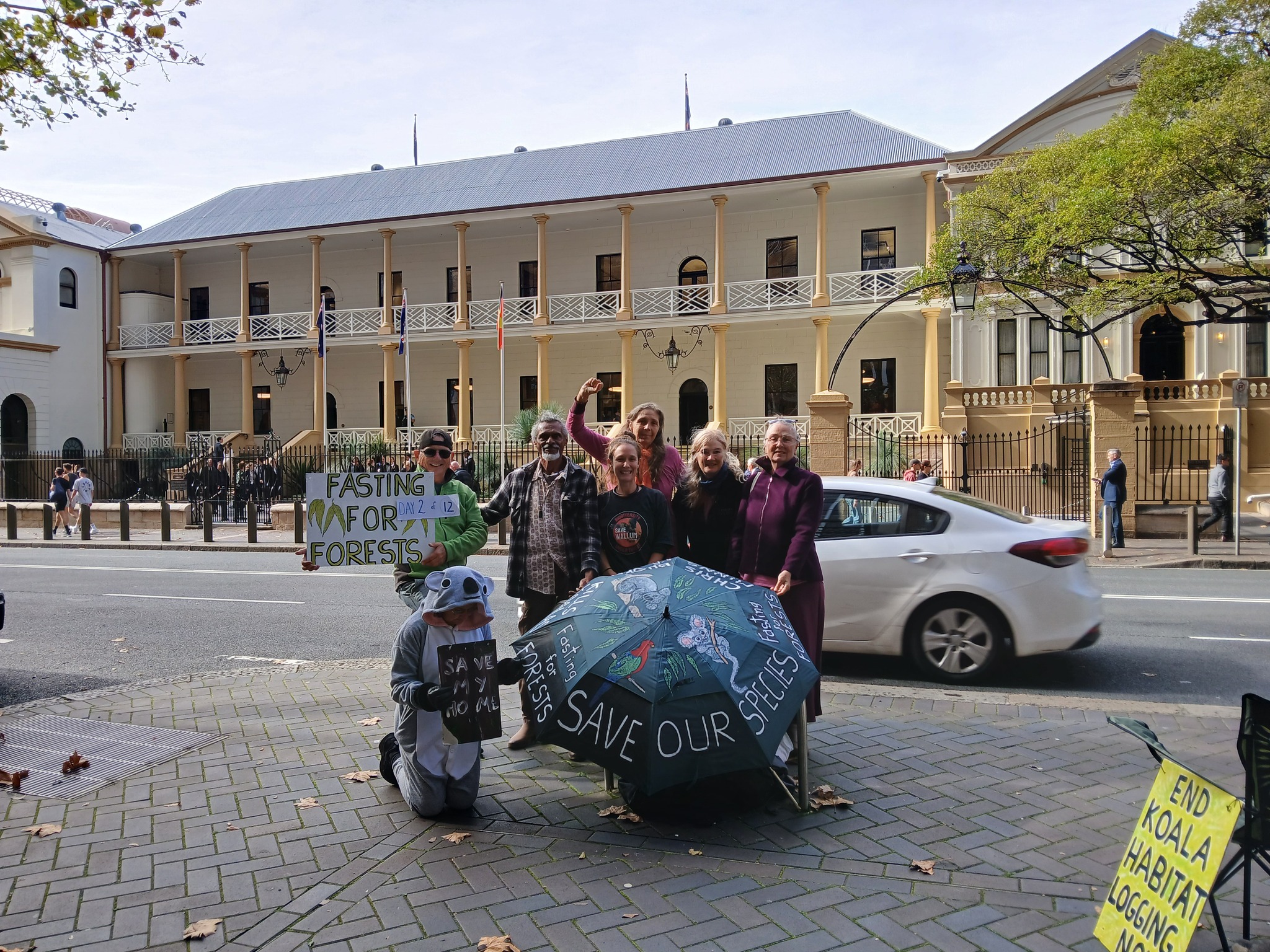
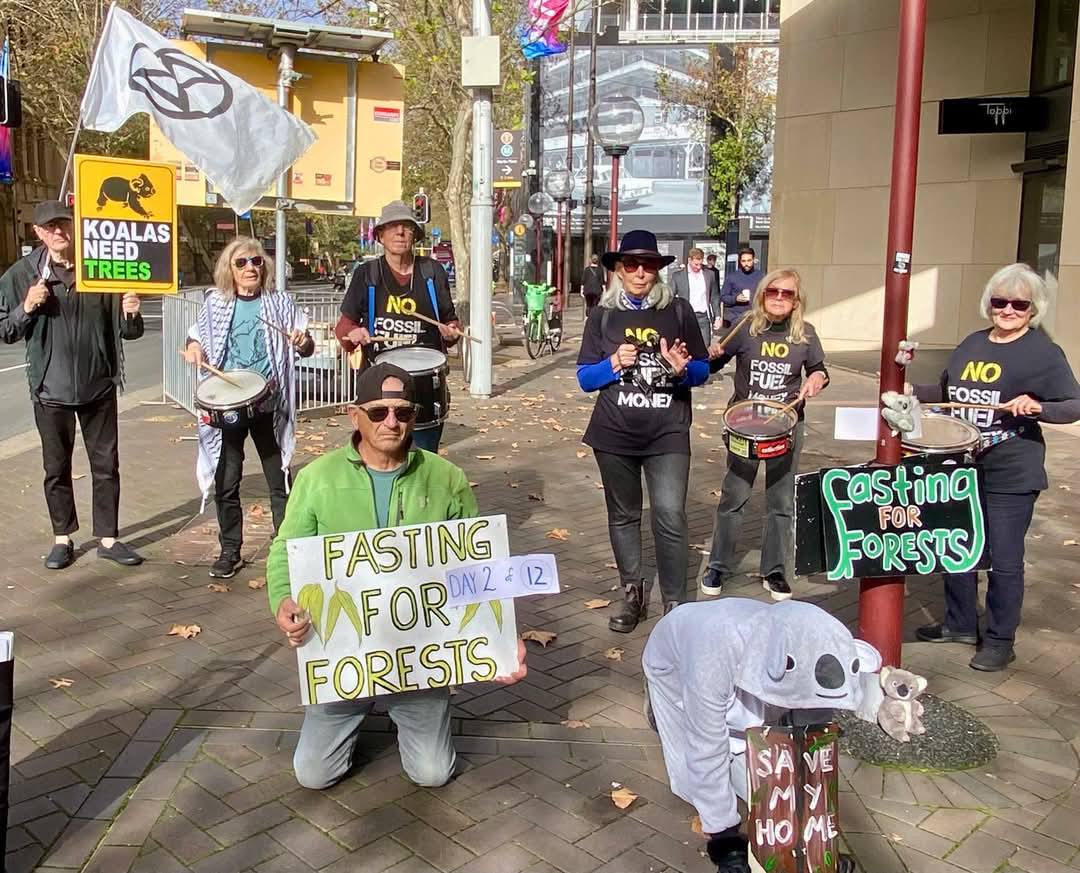
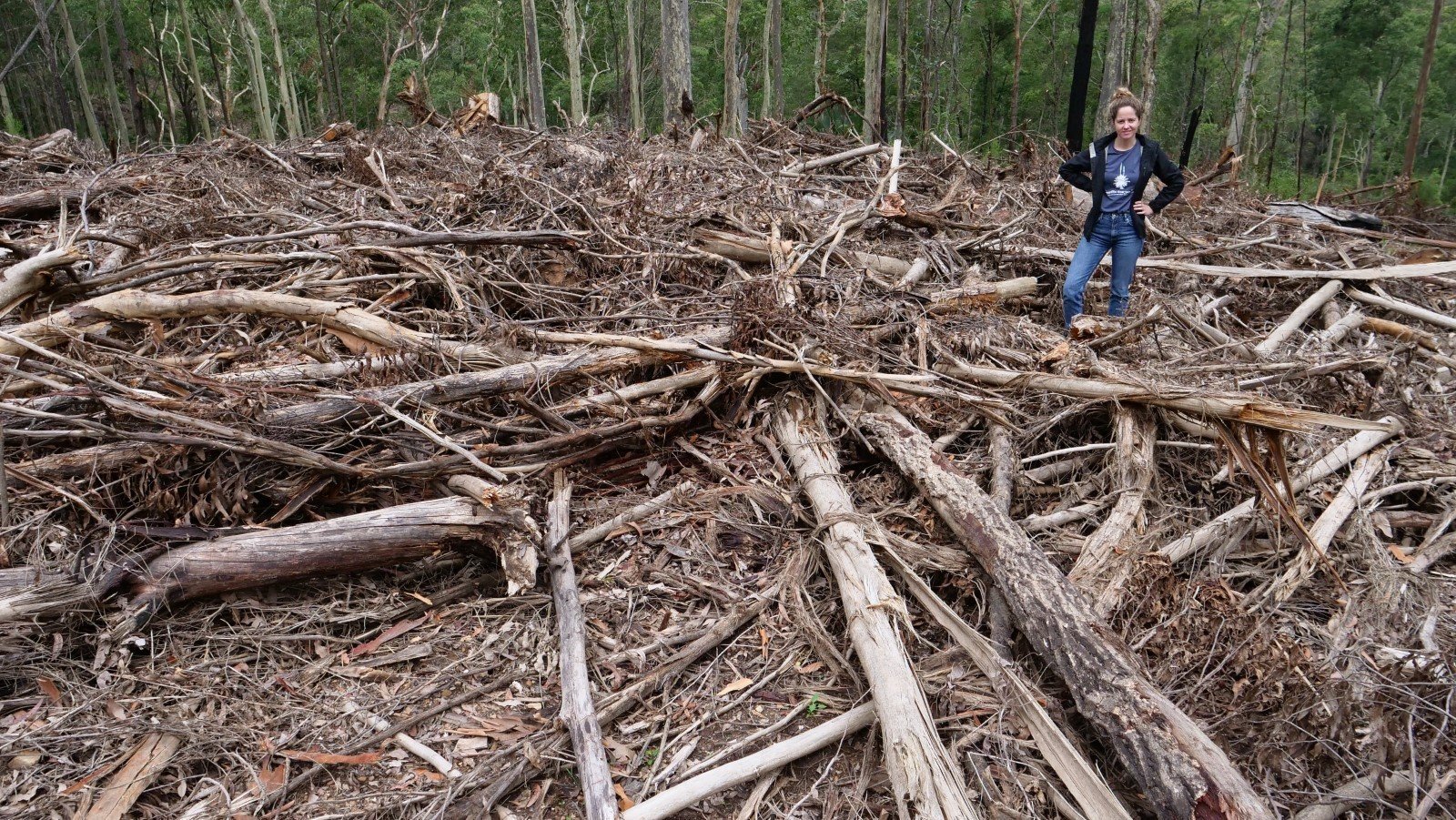
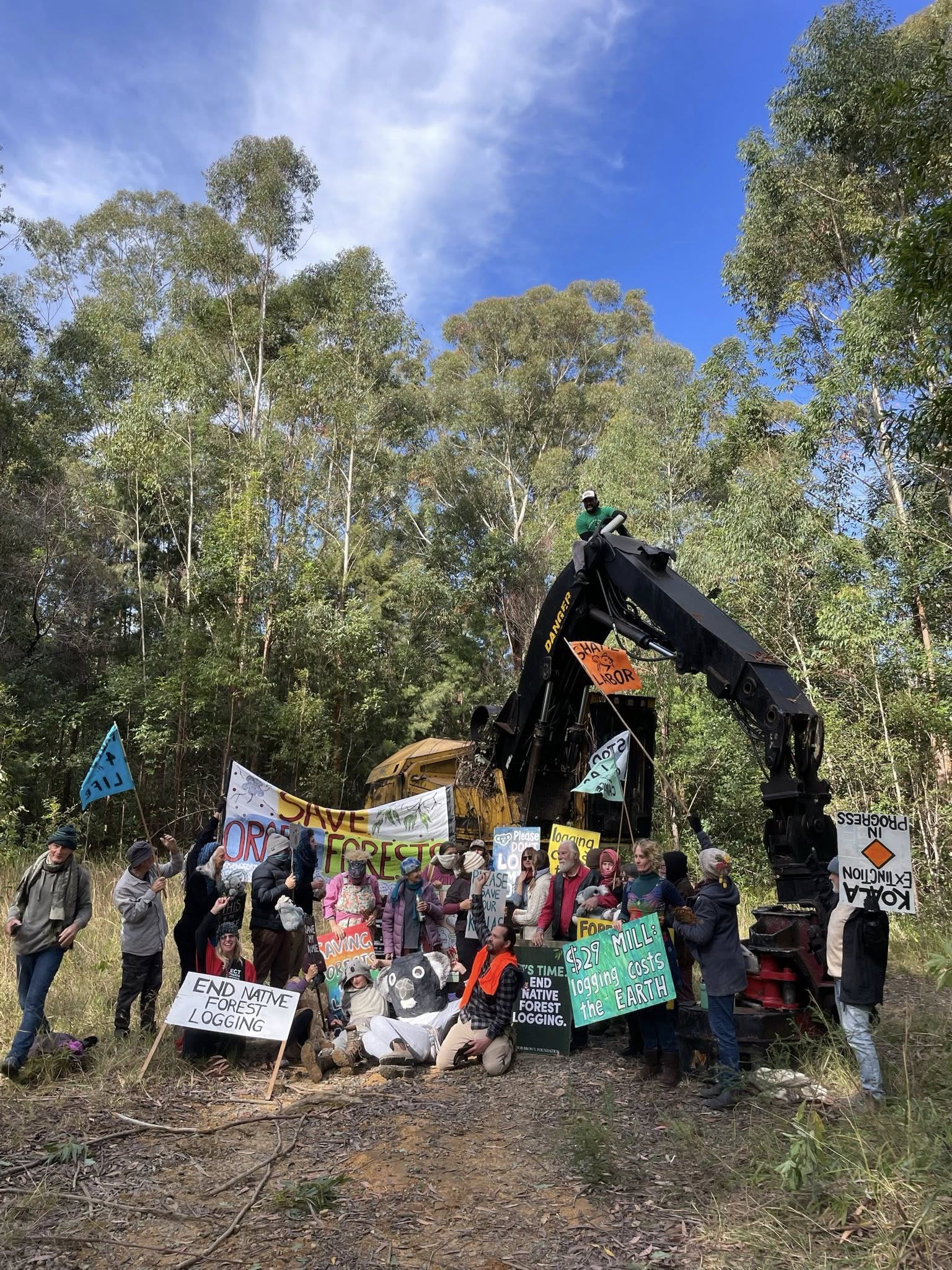
State of the Environment NSW Report Released
- The ability of remaining habitats in NSW to support native plants, animals and ecosystems has dropped to 29% of their original capacity since pre-industrialisation.
- The clearing rate of woody native vegetation remains significantly higher than before the regulatory reforms of 2016–17.
- The number of threatened with extinction plant species listings increased by 18 between 2020 and 2024, bringing the total to 657.
- The number of threatened with extinction animal species listings in NSW continues to increase, with 18 species added between December 2020 and June 2024, bringing the total to 343.
- Across NSW, the distribution of native land mammals is continuing to decrease.
- While native birds have been more resistant to declines than native mammals, their populations are also declining.
- The number of critically endangered native fish in NSW has increased.
- Since 2021, there have been 190 fish kill events, with tens of millions of fish dying in some events.
- Modelling in the assessment of the NSW Biodiversity Indicator Program undertaken in 2017 predicts that only 496 (or 50%) of the 991 land species listed as threatened are predicted to survive in 100 years’ time
- Most soils in NSW are in a moderate condition.
- About 12.6% of the original soil organic carbon levels has been lost from the top 30cm of soil since European colonisation.
- Much of the State’s agricultural land is becoming slightly more acidic. Soil pH changed by at least 0.15 units of pH between 2006 and 2020.
" I warn members that, when tabled in the House, it was over 600 pages long. Reading it online will save some trees and provide the same information."It is not comfortable for us to read, but we must read it if we are going to turn things around. More broadly, I outline the trends in relation to the topics, and the areas that are getting worse. Six of the topics are stable, but the environmental quality is low or poor; and three are getting better, which is good news, but it is only three. "
..."Another serious area of concern, which I consider to be the twin crisis to climate change, is the state of our biodiversity.Most simply, biodiversity is the health of our plants, animals and ecosystems—whether nature is functioning as it is supposed to. Healthy and flourishing biodiversity is crucial not just because we love our animals, plants and beautiful landscapes, but because it is crucial for the health of our people and economy and, fundamentally, the existence of humans on earth. It is not a "nice to have"; it is a necessity. Unfortunately, I report to the House that the number of threatened species listings in New South Wales has increased by 36 since December 2020. In 2024 more than 600 plant species and 300 animal species in New South Wales were threatened and at risk of extinction. The extent of native vegetation continues to decline, and the ability of remaining habitats to support native plants, animals and ecosystems has dropped to 29 per cent of their original capacity.Those confronting figures are despite the many millions of dollars invested by all governments to try to arrest this deterioration. It is clear that we need more effective environmental laws to protect species and their habitats. The New South Wales plan for nature sets out our priority actions, which include the State's first nature strategy and reform of the Biodiversity Offsets Scheme. We need to shift from merely mitigating environmental decline to actively repairing and restoring. The Government is working now on the actions that we have committed to. We are in the early stages of our Plan for Nature and reforms to the Biodiversity Conservation Act, some of which have already been passed.
As for our net zero target, the good news is that the report shows that net greenhouse gas emissions have fallen 27 per cent since 2005. I was pleased to release the latest update in the projections that say that we are on track to reducing emissions by 46 per cent by 2030. Before everyone has a go at me, I know that we have to get to 50 per cent by 2030, and we are absolutely determined to do that. But we welcome the small improvement from the last projections, driven by our work in renewable energy. We can succeed, and we will. Strategic long-term planning is essential, and we are doing that through initiatives such as the New South Wales climate adaptation plan, the development of the new net zero plan and the incredible work that the EPA is doing with licence holders in this State to map how they get to net zero.We have also placed consideration of climate change into the planning system. The Government is not tabling this report to gather dust. It helps us to guide future actions. They include protection of habitat through private and public land conservation; work on our plan for nature and the Biodiversity Conservation Act; many actions which make up our response to the waste crisis; and delivering on our net zero and our renewable energy targets and road map. We will continue to work on the measures that may not gather headlines but which are crucial to the health of our environment, such as the health of our soils and protection from invasive species.One of the easiest things we can do is to remove as many invasive species as possible. That is a cost‑effective, quick and easy change we can make to the environment. Air quality is improving, but there are still pollution hotspots, and we have work to do. How we balance the needs of towns, irrigation and the environment in maintaining the health of our inland rivers is a constant discussion. We are determined to meet that test. We also need to work to restore the loss of soil from erosion across the State. This work is shared across the Cabinet table with many Ministers, in recognition of the fact that the environment is everyone's business, because everyone relies on it. However, it is not just about Cabinet and Ministers in government. It is about the commitment by all of our parliaments to stay the course on protecting our environment. It is about working with every organisation.I give a particular shout-out to the environment groups and the Landcare groups—the people who decide every day to stand up and try to look after their local environment, in whatever way that is. Sometimes we do not agree, but their work is absolutely essential for the protection of our environment into the future. I respect every person who does that work, and I encourage them to keep going. The data is clear: We need bold, evidence‑based solutions to safeguard the environment. The findings of this report provide the impetus to drive real change and reinforce the actions we are taking. We must leave nature better off than how we found it. We have to protect what is left and restore what has been harmed. We have to work with anyone who wants to join us as we try to do that, because no one person can do it alone."